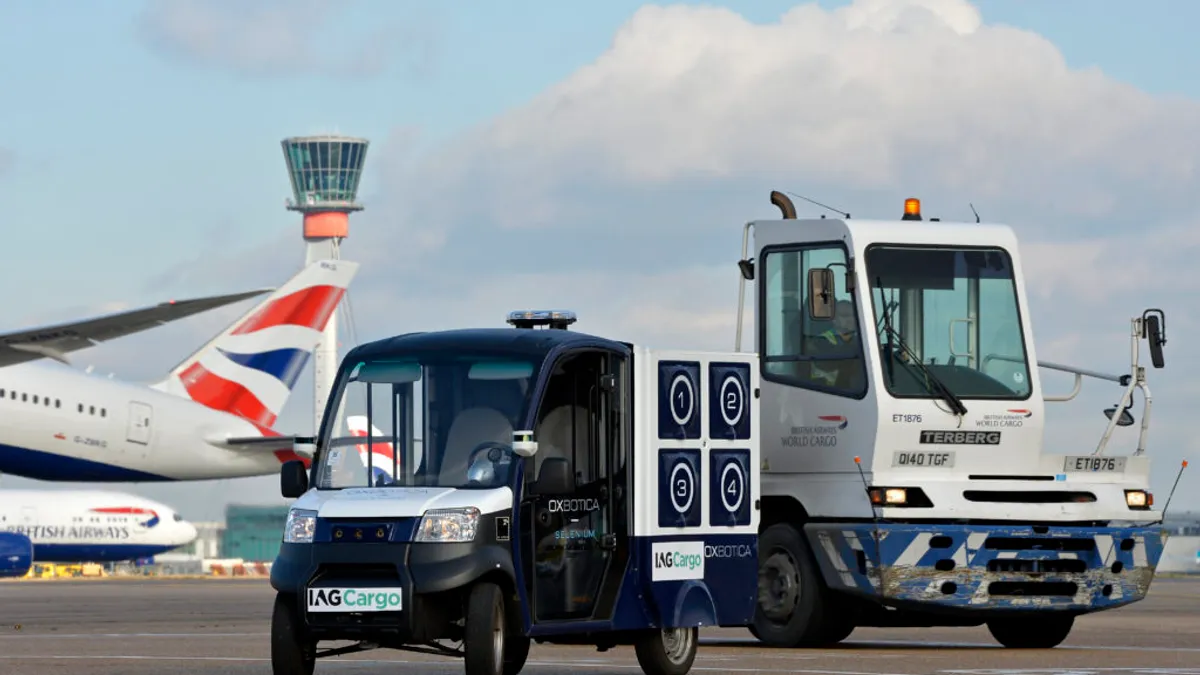Dive Brief:
- Autonomous vehicle manufacturer Oxbotica has completed its first U.K. airport trial, with IAG Cargo at Heathrow Airport outside of London, says The Loadstar.
- IAG Cargo told The Loadstar the aim of the trial was to understand how autonomous vehicles could work in an airport environment.
- Singapore will open a massive new port in 2021, with hundreds of automated vehicles ready to go.
Dive Insight:
Self-driving cars are getting all the publicity, not all of it good, of course, as the recent death of a pedestrian, hit by a driverless Uber vehicle in Arizona, will attest. (While video shows the safety driver apparently distracted, the vehicle should have detected the woman crossing the street.)
Maybe that tragedy is a sign that these vehicles might, at least for the near future, not be ready for use on public roads. While autonomous vehicles already are being used in warehouses, wider usage, especially in a closed-transport environment, is a possibility.
For example, London’s sprawling 4.7-square-mile Heathrow Airport was the site for a recent 3.5-week test to gather data on autonomous vehicles. IAG Cargo tested the CargoPod, made by Oxbotica, and gathered data over 200 km (124.2 miles) of test runs. Still early, IAG Cargo told The Loadstar it has no plans to move to an AV fleet, but it also said the data could be used to determine how the technology could "change the way airports function."
Airports aren’t the only closed-transport possibilities. The Port of Singapore Authority (PSA) is ahead of the game, already well into tests and planning to order hundreds of autonomous vehicles for its next-generation Tuas port. Scheduled to open in 2021, Tuas also will have as many as 1,000 automated cranes.
PSA says the port could double the country’s cargo-handling capacity to 65 million 20-foot equivalent units (TEUs), amounting to 1.3 billion square feet by 2040. Singapore has been testing 30 of these vehicles since 2017, with 22 battery-operated and 8 diesel and battery hybrids.
Tuas is being built from scratch, west of the city’s main ports. The new port is being designed from scratch, so new terminals can be added to accommodate future needs, PSA officials say.
So, Singapore and the United Kingdom are working to bring the technology of autonomous vehicles to their air and port facilities. In the United States, about 16 billion tons of goods and commodities are shipping annually, according to PwC. If facilities here haven’t begun planning autonomous vehicles, it seems like the time is past right to begin.












